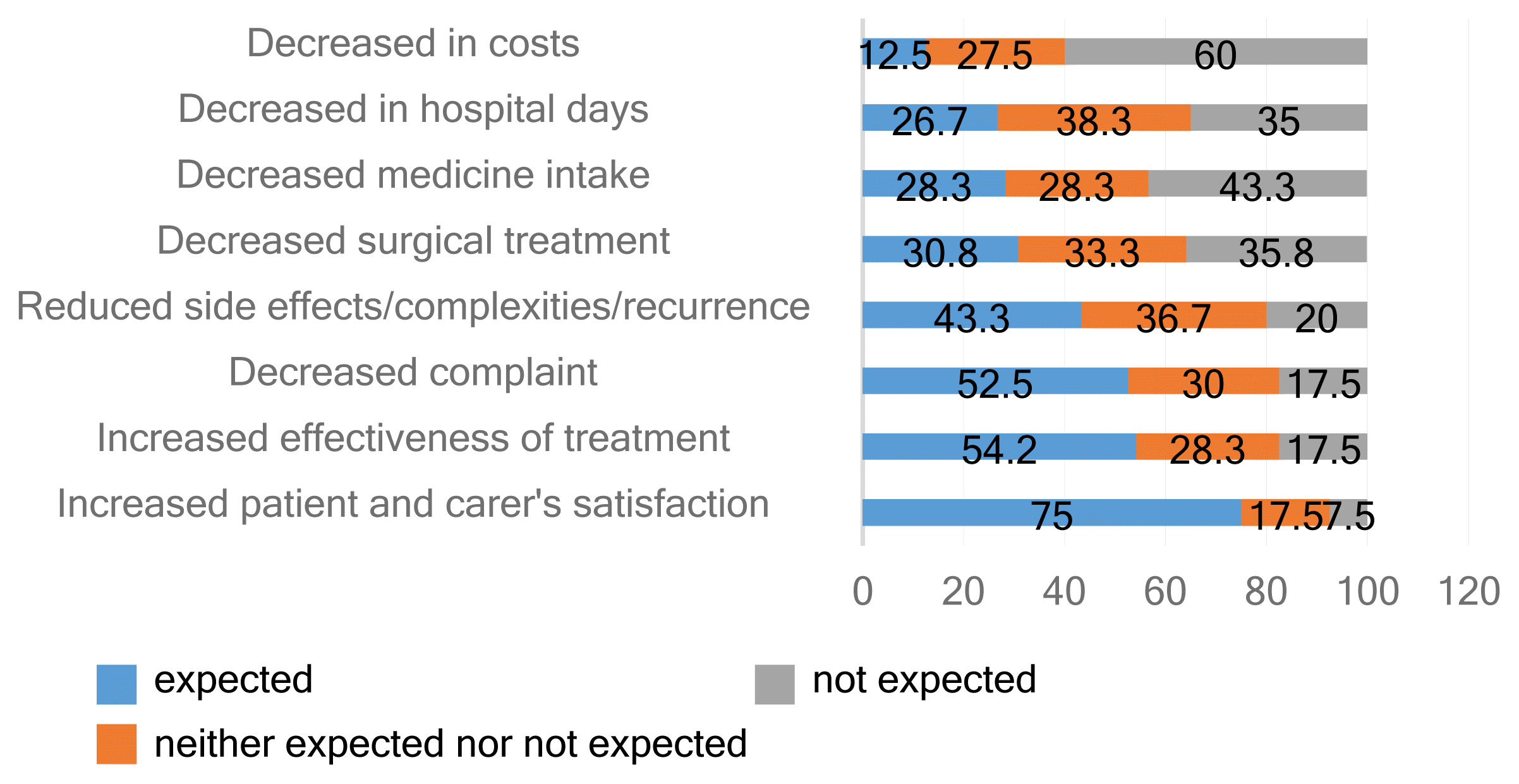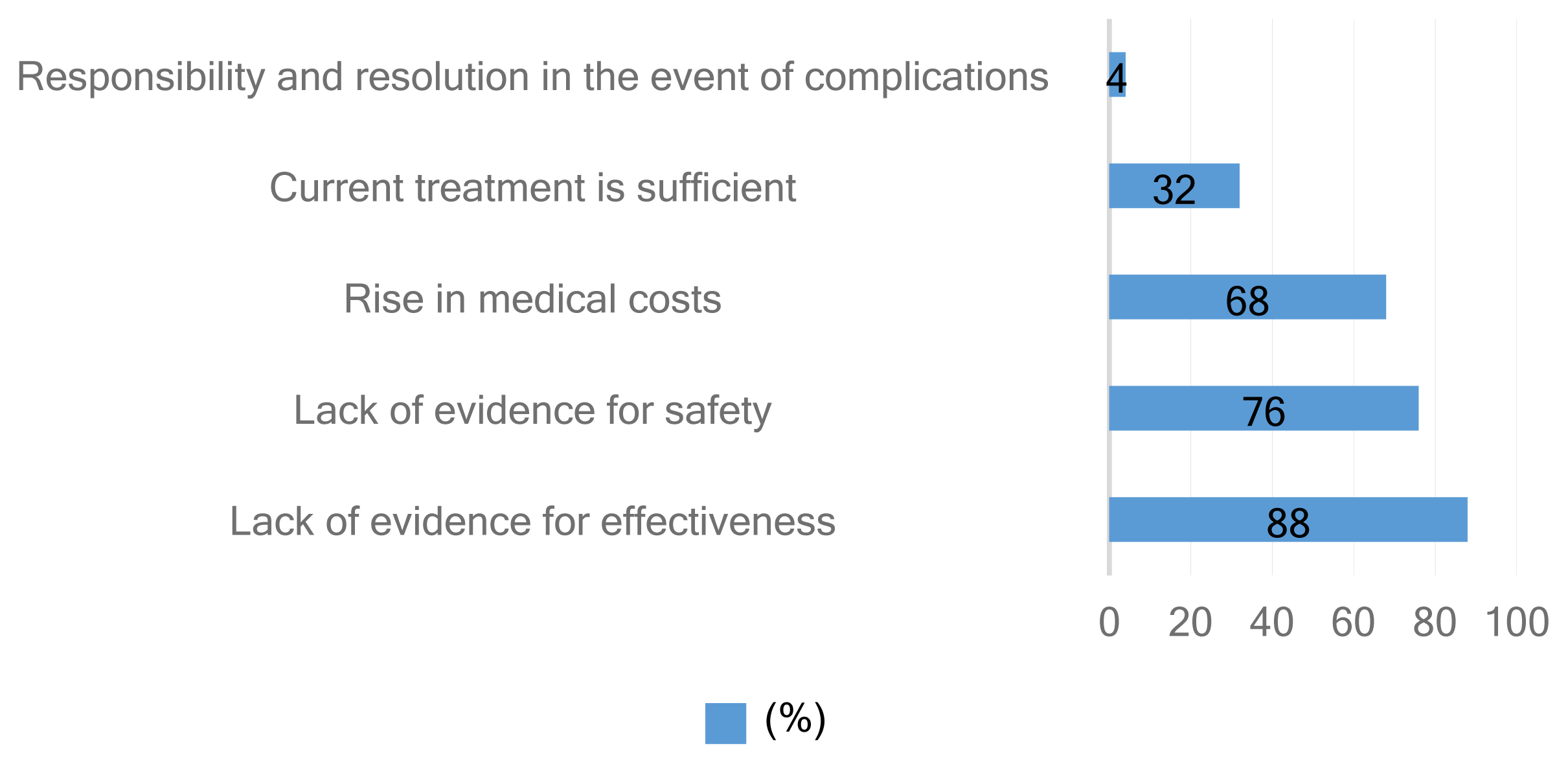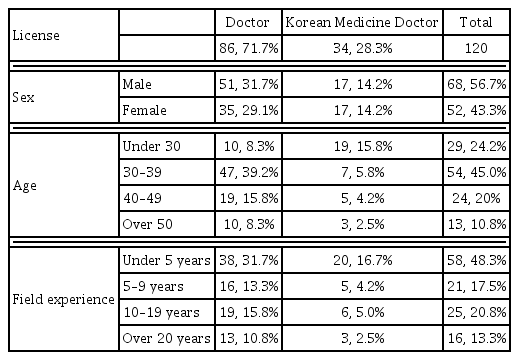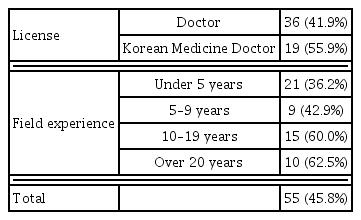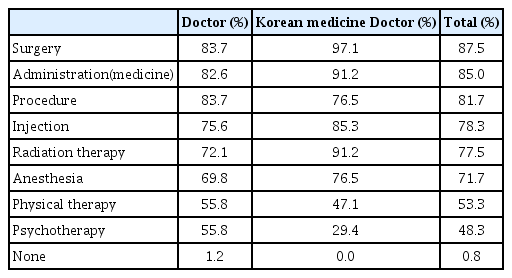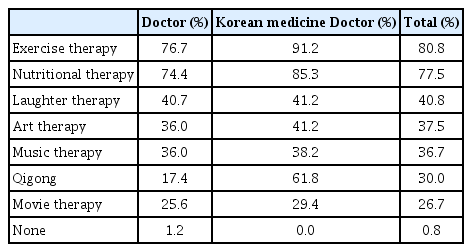A Survey Study on the Perception for Development of Integrated Medical Service Model and Its Application in Clinical Field:
- A Survey study with Doctors and Korean Medicine Doctors -
Article information
Abstract
Objectives
Objectives: In this study, we define a medical service type that combines Western medicine, Korean medicine, and complementary and alternative medicine (CAM) as an integrated medical service. This study, as part of tertiary hospital-based integrated medical service model and clinical field application, aims to collect status and opinions on integrated medical service for medical staff in the field.
Methods
This is a survey study, and was conducted on doctors from Kyung Hee University Hospital and Korean medicine doctors from Kyung Hee University Korean Medicine Hospital. Respondents were recruited on a first-come, first-served basis until the number of respondents reached 120. The investigation was conducted for a total of 16 days from October 4, 2021 to October 19, 2021 by e-mail.
Results
Recognition of integrated medical services was confirmed to be 45.8%, and 49.2% responded positively to the necessity of it. As a group of diseases that require the establishment of integrated medical services in the future, ‘disorders of musculoskeletal systems and connective tissues’ was the highest. The most expected advantages of providing integrated medical services were 'increased satisfaction of patients and guardians' and 'increased treatment effects.’
Conclusions
In this study, we investigated the perception of doctors and Korean medicine doctors on integrated medical services that combine Western medicine, Korean medicine, and CAM. It has been confirmed that medical staff generally have a positive perception of integrated medical services, and if the scientific basis for the effect of integrated medical services is supported, the rate of positive perception is expected to increase.

